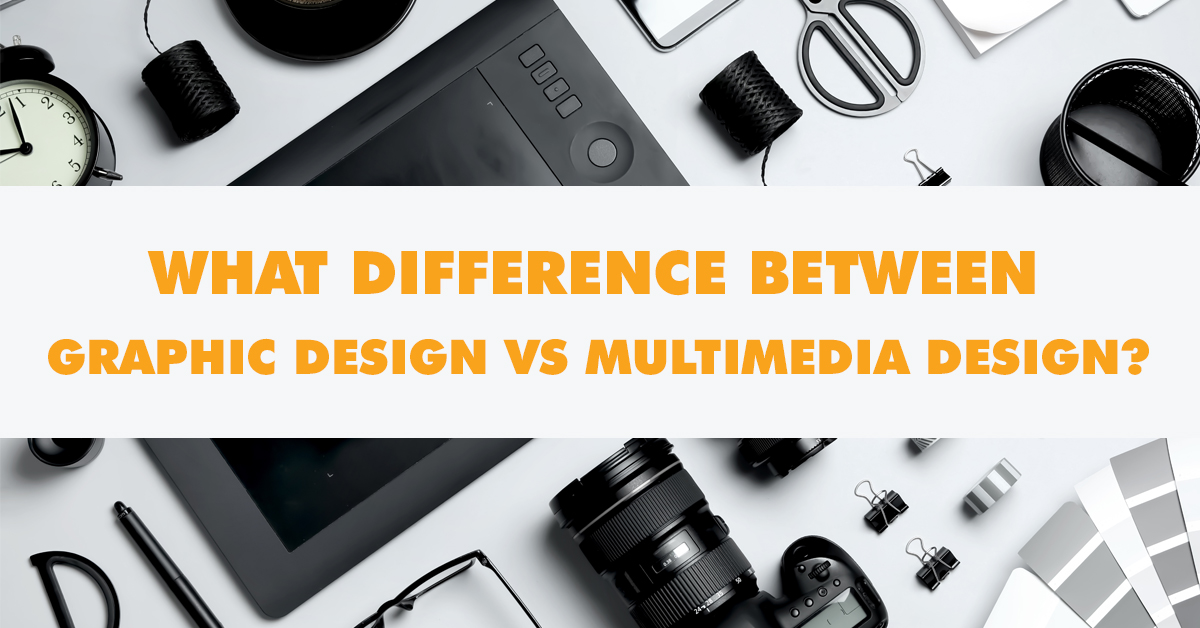Multimedia design and graphic design are two distinct fields that have seen a surge in demand in recent years. With the advancements in technology, both of these design jobs have evolved and created numerous opportunities for talented professionals. However, understanding the differences between multimedia design and graphic design can sometimes be challenging, especially given the varying job titles and responsibilities. In this article, we will explore the unique characteristics of each field and how they sometimes intersect.
What is Graphic Design?
Graphic design, as defined by AIGA (the professional association for graphic design), involves conveying messages through the use of pictures and text. It is a form of visual communication that focuses on enhancing the visual appearance of information. Graphic designers utilize their skills to create various printed materials such as books, newspapers, product labels, signs, business cards, brochures, flyers, and even merchandise like t-shirts, sweatshirts, mugs, and mousepads. They are also responsible for creating visually appealing logos.
The process of graphic design often involves combining text, photos, and illustrations to create collateral for businesses, colleges, museums, restaurants, and other establishments. The primary goal of graphic design is to create compelling messages and information that leave a lasting impact on the target audience. It’s worth noting that graphic design primarily caters to the print industry, with designers producing physical products that customers can hold in their hands, such as brochures or t-shirts.
What is Multimedia Design?

Multimedia design, on the other hand, encompasses the use of visual effects to explain concepts, entertain audiences, or captivate consumer target markets. According to Sessions College, multimedia designers work across various industries such as video games, TV, movies, and corporate or non-profit environments. These designers possess a broader range of skills compared to graphic designers.
The Bureau of Labor Statistics explains that multimedia design involves utilizing computers to create animations, graphics, audio, and video for different projects. Some multimedia designers also possess traditional art skills, such as drawing or painting, and can work with traditional media like charcoal, colored pencils, or oil paints. However, with the advancements in graphics programs like Adobe Illustrator or Photoshop, they can also create digital illustrations.
Unlike graphic design, which primarily focuses on physical products, multimedia design is predominantly seen on the web, digital tablets, and phones. The work of multimedia designers is more digitally oriented, and they often create content that is consumed online or through digital platforms.
Overlapping Areas
While there are distinct differences between graphic design and multimedia design, there are instances where these two fields overlap. Many design jobs require a combination of skills from both graphic and multimedia designers. For example, a designer may be tasked with creating print products like business cards, brochures, or books, while also being responsible for developing videos, building landing pages, or creating audio downloads for a company’s website.
This overlap occurs for several reasons. Sometimes, businesses have limited budgets and cannot afford to hire separate individuals for each job. In such cases, they seek professionals who possess a diverse skill set to fulfill multiple responsibilities. Additionally, having a designer with multiple skill sets allows for a more streamlined workflow and ensures continuity throughout the design process.
Furthermore, designers often need to acquire additional skills to advance in their careers. For instance, a junior graphic designer may eventually become a head graphic designer and, over time, have the opportunity to become an art director. Higher-level positions like art director may require a broader skill set, including the ability to create videos, brochures, and other multimedia content. Understanding all aspects of design allows art directors to effectively communicate with their teams and handle projects that require multiple areas of expertise.
The Changing Landscape of Design

In today’s design industry, professionals hold various titles, ranging from graphic designers to multimedia designers to UX/UI designers. These titles often indicate the type of work a designer typically engages in. However, the evolving nature of the design field means that many designers must possess multiple design skills to excel in their roles. Consequently, the differences between multimedia design and graphic design continue to diminish.
Designers must adapt to the changing landscape by expanding their skill sets and staying up to date with the latest design trends and technologies. By embracing the overlap between graphic design and multimedia design, designers can position themselves as versatile professionals capable of tackling diverse projects and meeting the demands of a rapidly evolving industry.
Conclusion
Multimedia design and graphic design may have distinctive characteristics, but they also share common ground. While graphic design focuses on conveying messages through pictures and text in the print industry, multimedia design utilizes visual effects to captivate audiences in digital platforms. However, with the increasing demand for versatile designers, there is a growing overlap between these two fields. Designers who possess both graphic and multimedia design skills can navigate through various projects and contribute to the ever-changing design landscape.
By embracing this overlap and continuously expanding their skill sets, designers can thrive in the dynamic world of design, staying ahead of the curve and meeting the evolving needs of clients and audiences alike.
